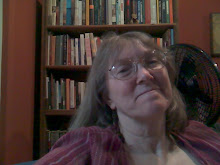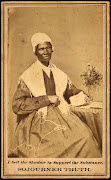In my second blog responding as a reader with my Spring 2009 "Approaches to the Study of Literature" class, I'm still on assignment #1, which asks readers to simply work on understanding the poem in the context of this particular community of readers—seventeen people, ranging in age from late teens to sixties (if you include me)—English, creative writing, drama, elementary education majors—did I miss anyone? I'm trying to write every day for this two-week period, keeping focused—obsessed, really. I'm also learning how to use the blog—this time how to save a document as a web page and post it on my blog. I'm still unsure of how to do this, so my last posting is filled with typos that I couldn't figure out how to fix—and this one may be, as well—but at least I can now take more time with composing an analysis. I am writing along with my students because I think teaching is all about staying fresh and learning with them, a philosophy sometimes mistaken for disorganization—which, in fact, turns into disorganization at times, especially when my personal life takes over the time I've mapped out for my intellectual life. But this ever-present threat of falling off the tightrope is real for students, too. My rationale for this project—at least one of them—is that at any given time, everything we're reading, the courses we're taking or teaching, personal relationships, chance encounters, all the whirling experiences of our personal history and our cultural influences, etc. all play into our "reader response" to a given text in a vast web of intertextuality.
This particular week in February, I'm reading Intertextuality by Graham Allen (a book in Routledge's New Critical Idiom series published in London in 2000), a text that locates the roots of intertextuality in Saussure, Bakhtin, and Kristeva. Like "reader response" the concept of "intertextuality" is much more complex than most people—even academics—assume. In my Intro to Lit course, we've just discussed Faulkner's "A Rose for Emily" and Tim O'Brien's "The Things They Carried" (mostly talking about specific narrative action, narrative pace, suspense, and other elements of style—essentially doing the reader response thing—close reading directed toward the effect on the reader of syntax, word choice, etc.). I've assigned other war stories--Frank O'Connor's "Guests of the Nation" and Haruki Murakami's "Another Way to Die"—Murakami connects to my World Lit course where we just read Yasunari Kawabata's novel Snow Country—a great read on the coldest day of the year in our little town on the southeastern coast of North Carolina. We're moving into literature of India in the World Lit course, and it was neat to run across a reference to Kawabata in a web article about Tagore. Spooky thing last week during conferences in the library—a creative writing student was talking about getting ideas for his short stories from his dreams, and as we turned to the text he was struggling to write a response to ( the Chinese classic "Monkey: Journey to the West") I had written in the margin of that page in my book a note about dreams. The same day, as I was reading Basho, a former student walked through the library coffee shop with a book on haiku under his arm. And, of course, T.S. Eliot—YES, I'M WRITING ABOUT THE WASTE LAND—was studying Sanskrit at the time he was composing parts of the poem, and Eliot includes references to the Buddha's fire sermon and the Upanishads, wonderfully intertextual with the short stories by Premchand and Tagore that we're discussing this week in World Lit.
I didn't plan this merging consciously, but it's all coming together in an interesting texture, a tapestry, in my mind. The connections I have mentioned only work for me, of course, since the other sixteen people who are doing the Waste Land project are not in that class. They're in other classes, though, and I encourage them to think about the way the various texts they are reading are weaving together in their brains. According to Allen, Roland Barthes puts it this way: "We know now that a text is not a line of words releasing a single 'theological' meaning (the 'message of the Author-God) but a multidimensional space in which a variety of writings, none of them original, blend and clash" (13). (I might argue with the God part, choosing to separate the cosmic kairos of God from the socially constructed kronos of human culture, but I think Barthes means the human Author of a literary work here, anyway.) Of course, Barthes is the theorist who coined the phrase "Death of the Author" while Julia Kristeva first labeled intertextuality. At one point, Allen or one of the writers he quotes uses the word "tissue" to refer to an interwoven web of texts. That's an interesting word, hinting at a strength and delicacy at the same time. I think of both an organic tissue—our bodies—the brain that is our organ of thought as we think about intertextuality and weave our webs of tissues—comprise tissues within tissues—AND a fine, soft piece of paper used for blowing our noses or even more intimate purposes. T.S. Eliot's The Waste Land is the epitome of such a tissue of intertextuality, in ways that Eliot deliberately put there, long before the idea of intertextuality existed, but also—more importantly to me and my students at this point—in ways Eliot could never imagine, since we—as readers—are making meaning in a vastly different universe. If I read line 413 of The Waste Land correctly, Eliot implies that each of us is isolated within the prison of our own individuality. But the thinkers quoted in Allen's book Intertextuality argue just the opposite. Even inside the deepest recesses of our brains, we are never alone.











No comments:
Post a Comment